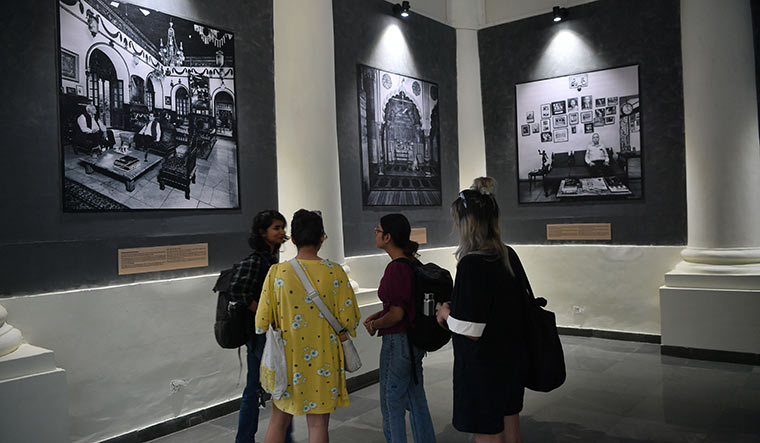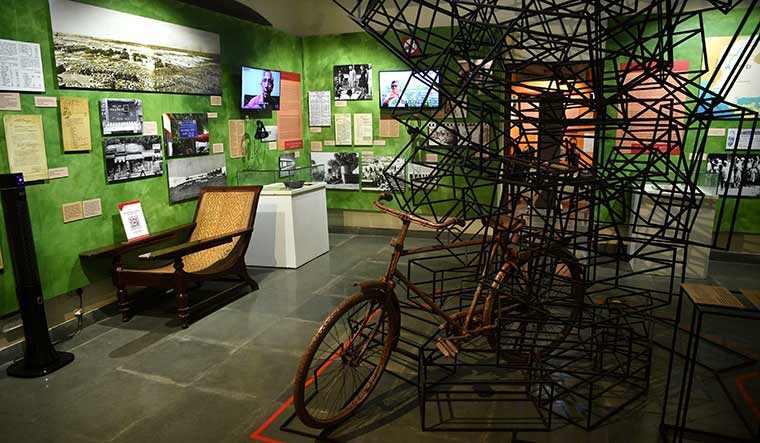Trains and platforms overloaded with desperate passengers who, in search of a new home, have left behind their homes and loved ones. The horrors of the partition have them displaced and a little dead inside. Some walk over piles of bodies, while some painfully leave their people behind—often not willing to search for them for fear of finding them in traumatising conditions.
Deepa Mehta’s Earth, Govind Nihalani’s Tamas and Chandraprakash Dwivedi’s Pinjar capture the pain of partition in cinema, as effectively as Khushwant Singh’s Train to Pakistan, Saadat Hasan Manto’s stories and Urvashi Butalia’s The Other Side of Silence do in literature.
One of the largest mass migrations in human history, partition torments the survivors even now. But when it comes to memorialising the event physically, and not just in the pop culture space, there still remains a certain void. Offering a vision to fill it is author Kishwar Desai, who had set up a partition museum in Amritsar in 2017 through The Arts and Culture Heritage Trust.
Desai has now established the Partition Museum in the Dara Shikoh Library Building at Dr B.R. Ambedkar University in Delhi. The location is apt. The city, especially Old Delhi, bled profusely during the partition—it lost about two-thirds of its Muslim population. The city’s refugee camps housed thousands of Hindu and Sikh refugees who poured in from across the border. Some families took refuge in Delhi’s tombs. “There were all sorts of people there—rich, poor, business families,” says Desai as she points to pictures of hundreds of camps at Purana Qila. “It didn’t matter what you had earlier. Now you had been reduced to a refugee in a camp.”
Old Delhi is more alive than the city’s posh areas because of its rich culture and often painful history. Cinema halls spoke volumes of the milieu. Jagat Talkies near Jama Masjid was popular among Muslims, while Moti Talkies was the preferred place for Hindus. Daryaganj’s Delite Cinema played patriotic films. Ads in Urdu, Hindi and English served the population.
Theatres collapsed during the partition, and with it went their monopolies. What remains of Old Delhi today is the Jama Masjid, the Muslim settlements around it, the Chandni Chowk, the Khan Market and stories waiting to be told. Desai felt fortunate when she was given a place in Old Delhi for the museum.
 Visitors view pictures of survivors of partition | Arvind Jain
Visitors view pictures of survivors of partition | Arvind Jain
Displayed at the museum are souvenirs of partition-era migrations—kettle, blanket, shawl, antique chair, and so on—sourced from the families of survivors. While the Amritsar museum focuses on the region around it, its Delhi counterpart shows the partition’s impact on the capital.
Galleries in the museum show various phases of partition. Along with the planned Dara Shikoh digital exhibition area, there are sections recounting the events leading up to the partition, the migration and the refugees, the rebuilding of Delhi, and the gallery of hope and courage. All of them display artefacts sourced from those who lived through the partition. There are installations, oral narrations and interviews, and pictures from the past. The migration gallery has a train installation, with lost luggage and traces of blood everywhere. It harks back to the time when trains carried thousands of refugees—and sometimes dead bodies—to this side of the border. The trains brought broken families that hoped for a new beginning in a new nation.
The first hall of the library that will soon house the digital exhibition was handed down to David Ochterlony, the British resident of the East India Company from 1803 to 1806. Desai hopes to view the restored space as a cultural hub that will host book launches, art exhibitions and musical evenings. She says the seed of the museum idea was planted 25 years ago, but she was initially discouraged as it would require a lot of work. “My parents lived through the partition and came from Lahore,” she says. “My father was pursuing his PhD [on] Urdu poetry and loved Lahore. When they came to India, my grandfather could only bring some books back, as a family had already occupied our house there.”
When India turned 70 in 2017, Desai felt it was the right time to set up a space commemorating the horrors of the partition. So, after successfully establishing the Amritsar museum, Desai started preparing for the Delhi museum in 2018. The Union culture ministry handed over the building to Desai’s trust under the Adopt A Heritage scheme. Her parents were the first to donate artefacts.
After visiting the Amritsar museum, author and lyricist Gulzar said, “You have taken our pain and put it up on the walls. Now we can talk about it.” Desai feels conversations would now be stirred in Delhi as well.
“We talk about freedom fighters often, but not the people who paid the price of the partition,” she says. “Unfortunately, independence would not have been possible without the partition and so, people unwillingly had to pay the price.”
Will there be another partition museum in a different part of the country? “No,” says Desai. “It requires a lot of investment, and until we don’t have enough, I can’t think of it.”


